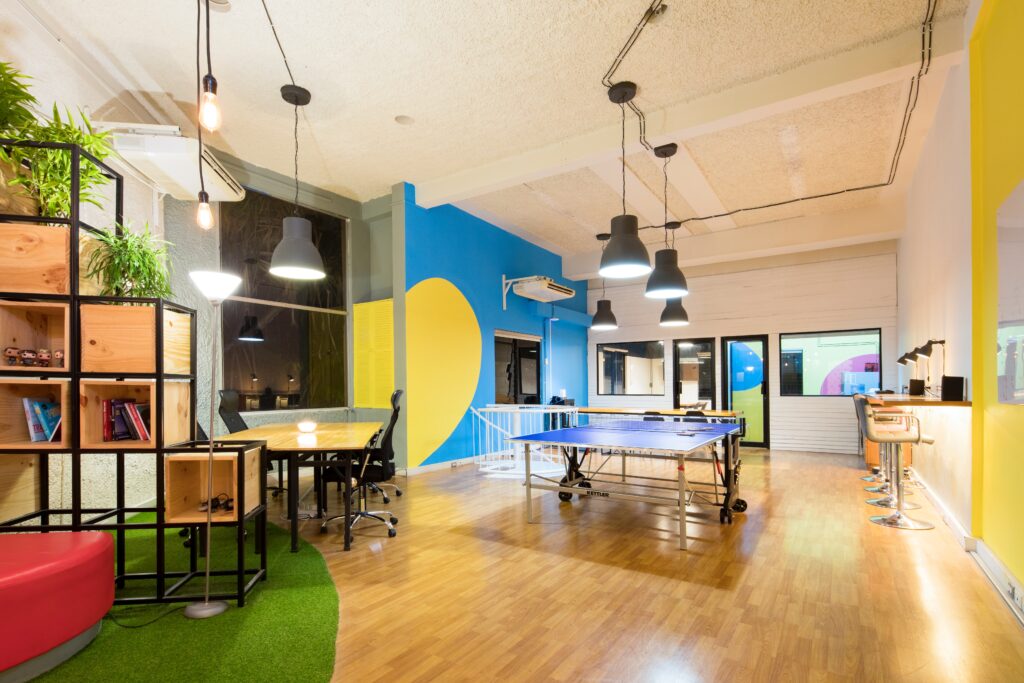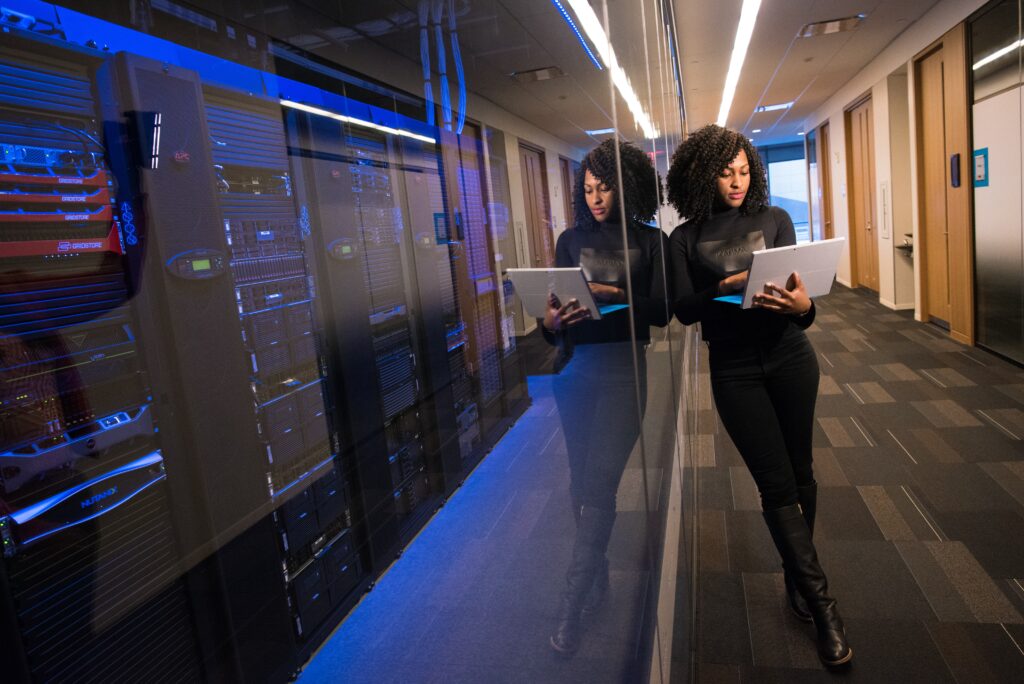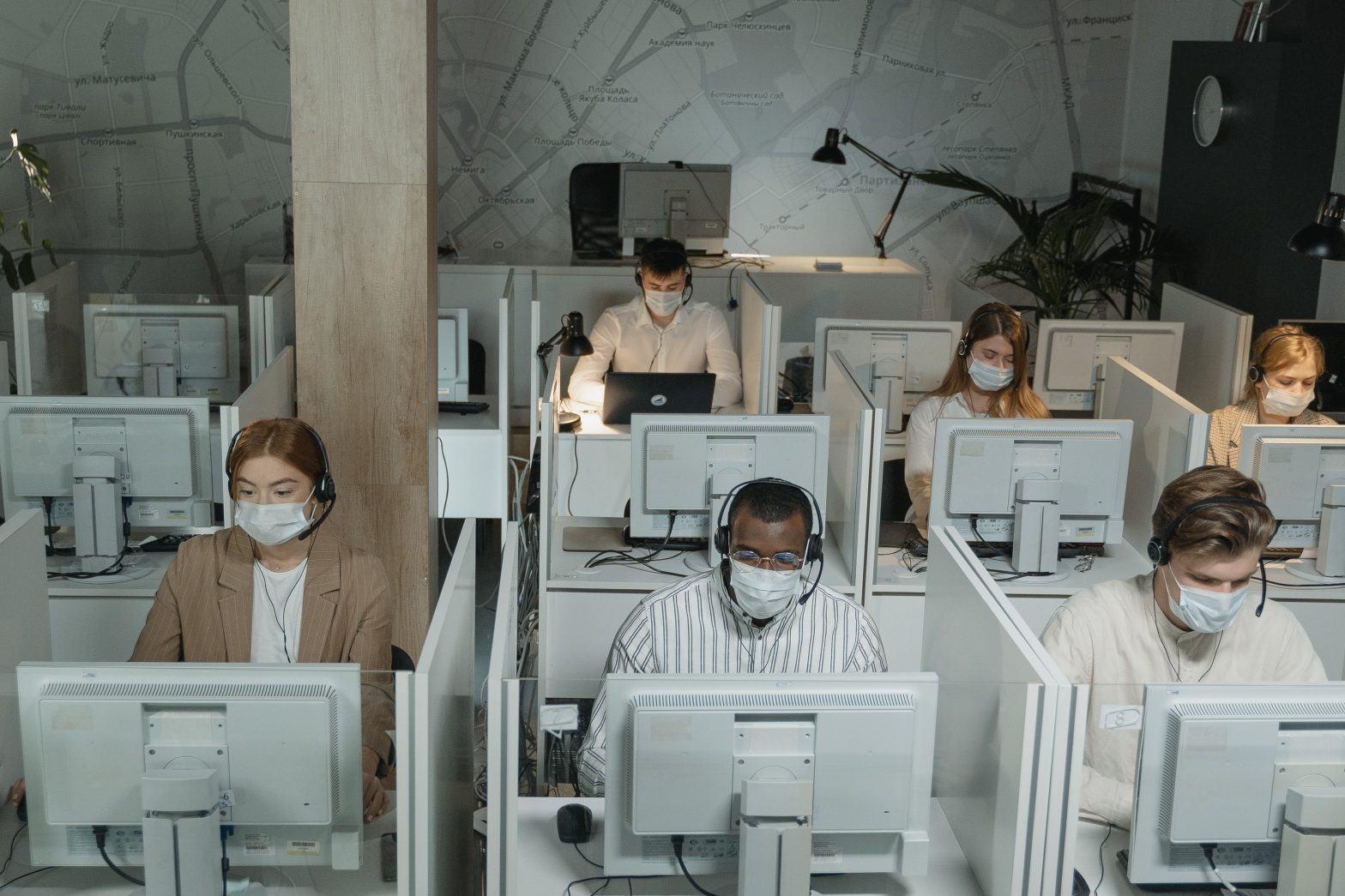In the world of work, and of corporate workspaces in particular, time is often measured in increments of decades—a timescale hard to grasp in the midst of a pandemic.
Each one of us, independently of our profession, is experiencing a disruption in our sense of time – our daily rhythms, our yearly plans, or even our ability to look into the future with confidence. We seem to witness the making of history on a daily basis: in the devastating loss of life due to the Coronavirus; in the mounting turmoil spreading across our cities; in launching new eras of space exploration; and in the relentless efforts of those who continue to confront the effects of this crisis through their work, with perseverance and hope. In rare moments, this complex time offers us a valuable gift: a different perspective. How we use this gift is of consequence, both in our work as well as in our personal lives.
Today
As we look to ease the restrictions of the lockdown, corporate real estate executives bear much of the pressure of orchestrating critical aspects of the phased return to work for the companies they serve. They are tasked with defining entirely new processes while testing their colleagues’ safe re-entry into the workplace. A variety of strategies and thoughtful to-do lists have emerged across the industry, and revisions will no doubt be made as offices are occupied in real-time. Understandably, the focus is on the immediate safety of employees returning to work and on reducing costs until the economic repercussions of the virus become more apparent. Yet, while developing best practices for a successful return to our offices is unquestionably an important and necessary task, it cannot be but a temporary fix. The real workspace design problem lies elsewhere.

Most innovative offices today, primarily those of technology companies, were designed precisely to increase the connectivity and interaction of their occupants in real life. In the physical workspace, this was achieved through design strategies that fostered collisions, visibility, and exposure to others throughout shared and amenity spaces. Social distancing as a variable is incompatible with the intended strategic outcome of those work environments. In fact, the correlation between human-to-human interaction and work productivity has long been an important performance metric of technology workspaces and work environments that embrace the collaborative ethos of Silicon Valley. Today, in the field of work, the question is: what should guide design and investment in the future of the office?
Tomorrow
While it may seem daunting to look beyond the next 12 months, we recognize we can’t afford to only solve the staggered return to our workspaces. This is the time to harness new insights in support of our workforce, and to have the courage to integrate new knowledge in the rebalancing of future workspace portfolios – precisely at the moment when our collective human experience of work has been disrupted and our memory is still sharp. Leading organizations across many fields have used this disruption of time to innovate: they’ve had to reaffirm their purpose, re-evaluate how they work, and be clear about how they add value to their customers’ lives in a world that now manifests a degree of uncertainty and complexity that few companies – or nations – were prepared to face.
The nature of work has been undergoing a significant structural shift over the past decade, well before the COVID-19 crisis. This shift is primarily driven by advancements in machine intelligence, automation, and the increased digitization of work across all industries. Innovative organizations, particularly in the field of technology, were well poised to embrace this shift early on. This pandemic has merely accelerated the adoption of some of these work tools by more mainstream groups. These companies have adapted their work practices with urgency to flatten hierarchies, assemble distributed teams to deal with the effects of the pandemic, and provide fast results amid ever-changing circumstances. They are successfully delivering value through digital technologies and collaboration tools, while experiencing the flexibility and the nimble workstyles usually associated with startups. This is a point of no return.

Design considerations
As businesses ‘return to work’, one of the many important choices that leaders will face is how to envision a future-of-work ready organization, and the future workspace that will support it. This is a complex design problem.
At least three domains relevant to the future workspace have emerged thus far from our experience of work during the Coronavirus pandemic.
1. The first design domain presents opportunity for innovation in work tools.
For weeks now, many organizations have operated almost exclusively through digital tools with the majority of employees working remotely, many for the first time. Historical data, analytics and qualitative information – on both performance and the overall aspects of remote work – will be extremely valuable to the design process. Capturing this information is most valuable as the experience of working as a network is still live. While it will not be sustainable to maintain the degree of urgency and cooperation that is usually experienced in a shared crisis, it is possible to formalize innovations experienced during this phase and to leverage those which will reinforce productivity, culture and shared values.
2. The second domain deals with new performance metrics – what the future workspace will have to deliver.
Because of the speed and widespread impact of the pandemic, organizations have had to adopt a learn-as-you-go approach to crisis management. The ability to absorb, synthesize and operationalize new knowledge across a distributed workforce has been crucial. As a design problem, this offers the opportunity to distill the essential work functions that will be required for an office to exist. To date, two are already clear. First, the current situation has evidenced the importance of simultaneous access to both big-picture and specialized information to support leaders, particularly executive teams, in making decisions together. Secondly, it has highlighted the need for change-readiness in teams. A team’s ability to internalize change and pivot work to meet a new context is an expertise achieved over time through ongoing learning and re-skilling. Both of these functions are optimized by face-to-face interaction and, most importantly, when they take place in physical space. Rather than spaces purposely designed as community hubs for socialization, mission critical and specialized learning functions will drive future design innovation and investment in the workspace.
3. The third domain is perhaps the most unexpected, and likely the most important: Human-Machine collaboration.
The pandemic has made clear that the integration of machine intelligence and analytics, and the use of digital technologies at work have greatly influenced the potential of institutions to be effective and to weather the storm. Leaders increasingly rely on the input of machine modeling and sophisticated data systems to navigate complex scenarios and make decisions. Human-Machine collaboration will continue to be a determining factor in work performance, whether in maintaining safe environments, rebuilding economies, or envisioning the future of our work.

Looking beyond
As organizations venture towards this future, one of the unique perspectives our current context offers is a shared view of human work. Many of us now share a deeper sense of things we value when it comes to our time and our work. We recognize how fragile our health can be, how hard we will work for those who depend on us, and the sacrifices we’ll make to be both full-time workers and educators to our children. We also acknowledge that we rely on moments of levity with our colleagues and friends, that empathy and mutual respect are powerful forces, and that meaningful interactions with others are essential to renew our energies and remind us we are not alone. Against all odds, it is precisely our humanity at work that is on display now. This has significant implications for future workspace design, particularly when human-machine collaboration will be a non-negotiable aspect of this future.
Work – including side by side with machines – is an integral part of human development. This challenging moment, in all of its raw complexity, offers us the gift of a rare perspective into meaningful human work. We can seize this knowledge now to reshape the value of work for the present moment, but also for a future that is guided by the ideals we have discovered to be essential, in and outside of work. Do not be mistaken, how we respond now in building the future of our organizations and the work environments they will inhabit will matter for generations of workers. Let us plan wisely.
Jennifer Magnolfi Astill is the founder of Programmable Habitats, a consulting R&D practice specializing in the strategic development of high-tech future work environments. Her applied research focuses on lead technology users and workspaces built for human-machine collaboration. She has served as advisor in headquarter workspace initiatives for Alphabet/Google, Zappos, Microsoft, Herman Miller, PepsiCo, BBC, among others. She is the co-author of Always Building: The Programmable Environment. Her research on technology and space has been featured in several publications and conferences. Jennifer was invited to join the 2016 White House National Frontiers Conference in American Innovation. Listen to her episode on The Workspace of Tomorrow podcast here.
